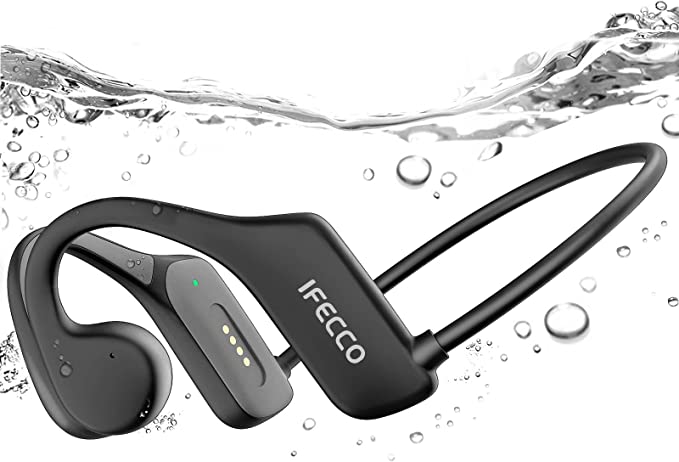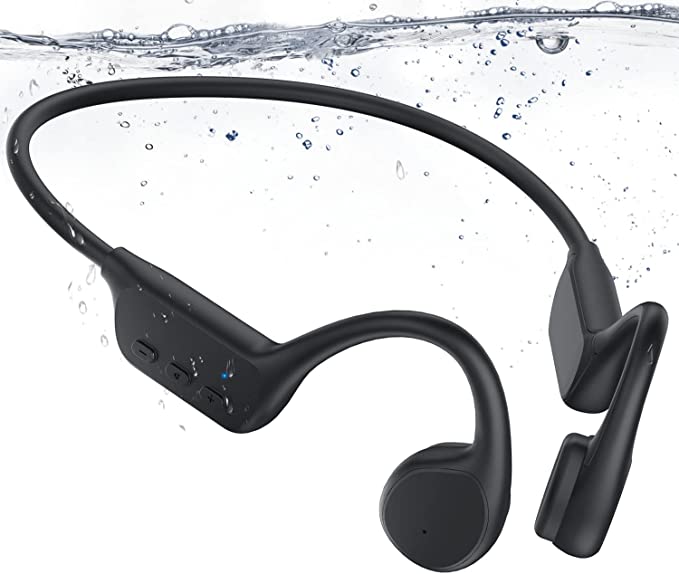The Unseen Burden: Deconstructing the Physical, Visual, and Cognitive Ergonomics of Wearable Displays
Update on Oct. 20, 2025, 6:55 a.m.
On a specifications sheet, “79 grams” looks like a triumph of miniaturization. For a device like the XREAL Air, it’s a key marketing point, positioning it closer to a pair of sunglasses than to a bulky virtual reality headset. This single number promises effortless, all-day wear. Yet, scattered across user forums and reviews is a recurring narrative of discomfort: a persistent pressure point behind an ear, a constant need to readjust for clarity, a subtle but growing sense of nausea. This disparity between the promise of a number and the reality of human experience reveals a profound truth: the greatest challenge for wearable displays is not technological, but biological. The true measure of these devices is not in megahertz or pixels, but in how they negotiate with our bodies and minds. The 79-gram figure isn’t an answer; it’s a question. How much physical, visual, and cognitive burden are we willing to accept for a screen that is everywhere?
To truly evaluate the viability of any wearable device, we must dissect the concept of “comfort” into its core components. It’s a tripartite challenge, a delicate dance between the physical object, our sensory organs, and our cognitive processing. A failure in any one of these domains can render even the most advanced technology unusable.

The Physical Burden: Beyond Weight and into Pressure
The 79-gram figure is a deceptive starting point. While low absolute weight is crucial, our perception of comfort is far more influenced by weight distribution, balance, and the application of pressure. Research in applied ergonomics has shown that for head-mounted displays, once the weight exceeds approximately 100 grams, the load on cervical (neck) muscles begins to increase non-linearly, leading to faster fatigue. While devices under this threshold are significantly better, the design of the frame is what translates that weight into either comfort or pain. The human head is not a uniform sphere; it is a complex topography of bone, cartilage, and soft tissue, with specific areas—notably the bridge of the nose and the mastoid process behind the ears—that are highly sensitive to sustained pressure.
A common user complaint regarding many early AR glasses, including the XREAL Air, is the development of a “pressure point” behind one ear, often on the side housing the electronics and USB-C port. This is a classic ergonomic failure. It signifies that the temple arms are not adequately distributing the device’s (albeit light) weight across a wide enough surface area. The design may have been based on a standardized head model, but human anthropometry shows vast individual differences. A study comparing standard Caucasian head models with average East Asian headforms, for example, reveals significant statistical variations in cranial width and mastoid-to-ear distance. A design that is comfortable for one demographic may be agonizing for another. This is why adjustability—in temple length, angle, and nose pad size—is not a luxury feature, but a fundamental necessity.
This challenge is amplified for the millions who require prescription lenses. The integrated prescription lens frame offered with many AR glasses is an elegant solution, but it doesn’t account for all users. For those with high astigmatism or complex prescriptions, or for users who simply prefer not to buy another set of lenses, the only option is to wear the device over their existing glasses. This “over-the-glasses” approach almost universally fails, leading to improper fit, pushing the AR display out of the optimal viewing position, and creating an unstable, uncomfortable setup. The physical burden, therefore, is not just about grams, but about the thoughtful accommodation of human diversity.
The Visual Contract: Clarity, Comfort, and Conflict
Once a device feels physically settled on our head, we begin a new negotiation—this time with our eyes. We enter into a “visual contract” with the device, expecting clarity and comfort. Certifications like TÜV Rheinland for Low Blue Light are important first steps, addressing concerns about prolonged exposure to high-energy light from the display. However, AR technology introduces unique visual challenges that go far beyond the spectrum of light.
A key factor is the “eyebox”—the virtual three-dimensional space where the user’s pupil must be located to see the entire, clear image. A small eyebox means that even a slight shift of the glasses on your face can cause parts of the screen to become blurry or disappear. This forces the user into a cycle of constant, frustrating readjustment, as described by one user who “could almost never get a completely clear image” from a competing device, despite its technical sharpness. A larger, more forgiving eyebox is a hallmark of superior optical design, prioritizing user experience over on-paper specifications.
The most profound challenge, however, is a neurological phenomenon known as the Vergence-Accommodation Conflict (VAC). In the real world, when you look at a nearby object, two things happen simultaneously: your eyes converge (verge) on the object, and the lenses in your eyes change shape (accommodate) to focus at that specific distance. These two responses are hard-wired together in your brain. AR glasses break this link. The optical system collimates the light, making the virtual screen appear to be several meters away. Your eyes’ accommodation relaxes to focus at that far distance. However, if a virtual object is meant to appear close to you, your eyes will still attempt to converge on it. Your brain receives conflicting signals: the vergence system says “the object is close,” while the accommodation system says “the object is far.” Studies on VAC have demonstrated that this conflict can lead to measurable increases in visual fatigue, eye strain, and in some cases, headaches and nausea. It is a fundamental sensory mismatch that traditional screens do not create.
The Cognitive Toll: When Information Overlays Become Overload
Even if a device is physically light and visually clear, it presents a final, more subtle challenge: the burden on the mind. By overlaying digital information onto our reality, AR glasses are not just displays; they are attention-altering tools. A notification for a new email, a map overlay with walking directions, a video playing in the periphery—each piece of information competes for our finite cognitive resources. Research in Human-Computer Interaction has shown that interruptions, even brief ones, carry a significant “resumption cost.” After a notification pulls your attention away from a primary task, it can take an average of 15-20 seconds to fully re-engage and regain your previous level of concentration. In an AR environment, where these notifications can be persistent and integrated directly into our field of view, the potential for a state of continuous partial attention is high.
Furthermore, the stability of the virtual world is paramount. Our sense of balance is maintained by a delicate interplay between our visual system and our vestibular system (in the inner ear). When we turn our head, our vestibular system reports the motion, and our visual system sees the world move accordingly. If the AR display lags even slightly behind our head movement—a latency of over 20 milliseconds is often cited as the critical threshold—a sensory conflict occurs. The vestibular system says “we are turning,” but the visual system (the AR overlay) says “we are not… quite… yet.” This mismatch is a primary trigger for simulator sickness, a feeling of nausea and disorientation. User reports of the “AR space” feeling “nauseating” or having a “jello effect” are direct subjective experiences of this hardware and software failing to meet the brain’s stringent real-time requirements.

Conclusion: Designing for Humans, Not Just for Eyeballs
The pursuit of the perfect wearable display cannot be a simple race for lighter weights, higher resolutions, or wider fields of view. It must be a holistic endeavor, grounded in a deep respect for the complexities of human ergonomics, perception, and cognition. A truly successful wearable device will not be the one with the most impressive spec sheet, but the one that disappears. It will be a device that doesn’t create pressure points, that doesn’t require constant fiddling, that doesn’t fight our visual system, and that doesn’t overwhelm our attention.
As the legendary designer Dieter Rams stated, “Good design is as little design as possible.” For wearable technology, this means designing not just for our eyeballs, but for the entire human organism. The unseen burden—the cumulative physical, visual, and cognitive toll—is the ultimate barrier to adoption. Overcoming it will require less focus on cramming more technology onto our faces, and more focus on creating a seamless, harmonious interface between the digital world and ourselves.










